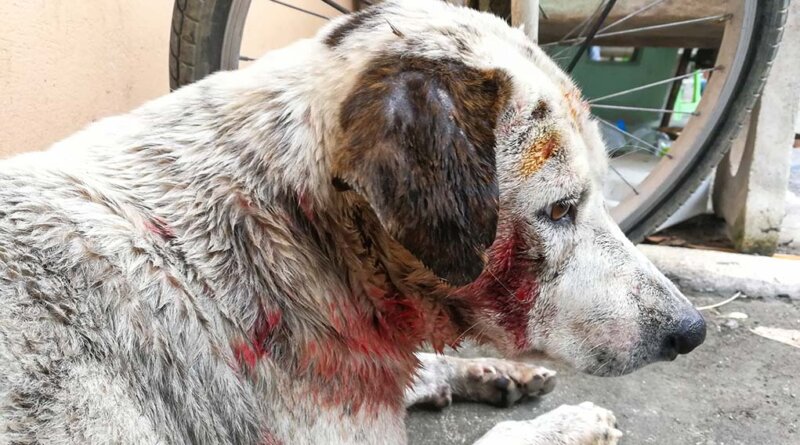5 Things You Should Do Right Now and Afterwards
When your own dog is attacked by another, it can be a scary moment. The flurry of teeth, fur, growling, and yelps creates an adrenaline rush that makes it tough to catch your nerve and think clearly, but it’s crucial that you maintain your calm. One of the common questions to vets online is my dog was bit and what to do after, so here are a few tips.
Once you’ve separated the animals the correct away, it is critical to keep a clear head. If the injuries are dire, you need to rush to the vet. Do your best to quickly get the situation under control without endangering yourself. You can carry a repellent spray but this doesn’t always work if one dog has latched onto the other and refuses to release.
Dealing with a Dog Fight Carefully
Dog trainers note that the most best way to separate two fighting dogs is to carefully grab the hind legs in a manner that won’t injure them. Do not reach for the face, neck, or put your hands in the way of teeth. Your dog can’t tell the difference between you and the animal they’re being attacked by, and you may get bitten due to confusion.
When you have a situation where one dog won’t let go of the other, it helps to slide a broomstick or another durable object between the dog’s teeth. The discomfort should encourage the aggressor to let go, allowing you to safely pull them apart without damage.
Do not yank or continue to tug if one dog is still holding on – this will do more harm than good. It can feel like forever, but be patient, the assailant dog will have to tire out at some point and will eventually let go.
After all this effort, you may have to deal with dog bite injuries. So if my dog was bite, what would I do and what are my next few actions? Below are some tips for this case.
My Dog Was Bit: What Do I Do Now?
1. Assess Whether Injuries are Urgent
Look inside your dog’s mouth for broken teeth or lacerations to the tongue and gums. If no blood is present that you can see, run your hands over your dog’s ears, legs, and torso to feel for swelling.
Bite wounds on dogs with darker fur may be harder to locate, and you could easily miss a deep puncture if you don’t perform a thorough check.
Sometimes, there may be too much blood present for you to be able to clearly see where your dog was bit. Place them in a tub or hose them off to help determine where the hemorrhaging is coming from. When internal organs appear to be exposed, don’t attempt to treat the laceration on your own; your dog needs professional care immediately.
2. Disinfect and Treat the Area
Clean the dog bite wound with a gentle soap and water if your pet will allow it. Dog bites around the ears and face can be quite painful for the dog; the ear-flaps and inner ear are extremely sensitive and contain countless blood vessels. This also produces a lot of blood, but if the wound is particularly deep and tender, you won’t be able to apply pressure to it.
In such situations you’ll have to get your dog to the veterinarian right away, and they’ll likely need to be put under anesthesia if necessary. This way, your vet can assess and provide proper treatments for the dog bite injury.
3. Go to the Vet After Getting It Under Control
Even if the dog bite injuries aren’t life-threatening, you should still take your pet to the vet. It is typical for veterinarians to do a full physical exam and provide antibiotics when bites are involved to ensure no infections, regardless of whether or not the wounds need extensive care.
Puncture wounds from dog bites generally don’t require sutures or stitching. Veterinarians prefer to sterilize and allow open air to help the hole close on its own. Since the dog bite will remain exposed until it heals completely, antibiotics will prevent any further infection from occurring.
Your vet will likely recommend a tetanus shot, and if the animal that bit your dog appeared to be rabid, your pet may have to undergo a 10 day quarantine for observation of rabies.
4. Monitor Your Dog Closely for a Few Weeks
Now that you’re past the hard part, all you need to do is comfort your pet and help them heal up. Watch for signs of tetanus even if your pet has been vaccinated prior.
Should you notice that your dog appears to be getting stiff in the joints, the ears, experiences trouble walking and moving, or begins to avoid sunlight and loud noises, these are tell-tale indications that they’ve contracted tetanus.
You’re probably already keeping the dog bite clean and administering medicine on a regular basis, which is exactly what you should be doing. Remember to keep your dog supervised, don’t let them lick or gnaw on scabs and stitches (use an Elizabethan collar). If the dog happens to tear open a stitch, you’ll have to go back to the vet and start the process again.
5. Slowly Reintroduce Your Dog to Other Dogs Again
After experiencing a traumatic situation like being bit by another dog, your pooch may need some time to warm up to other animals again. There’s a chance that they’ll respond defensively when approached by other animals, but that doesn’t mean you should completely cut them off from socialization.
In fact, your pet needs to experience more positive interactions with other dogs after being bit. If the last exchange they ever endure with another dog is a fight, they’ll never be able to move forward from that situation.
To fix this, go back to socialization basics: allow your pet to hang out with other dogs who are calm, submissive, and easy going. Senior dogs are typically mellow, and larger breeds will obviously be less fearful of smaller dogs.
Learn to recognize aggression in other animals or your own pet when in dog parks or your daily walks. Look for defensive and fear-driven aggression signs such as raised fur on the back, bared teeth, yelping or growling when another dog come near.
Take it slow and don’t force your dog to get close to others because there’s a good chance it won’t do anything more than trigger another fight. Only after your dog is comfortable, you can then take them on walks through public parks and see how they react to other pets walking by.
Avoid the dog park if it’s busy; lots of uncontrolled pets mixed with excitement and energy will be too much, too soon for your dog. The good news is, when my dog was bit, it didn’t take more than a few weeks for them to bounce back from that dog bite and get things back to normal.
READ NEXT: Why Are Dogs More Prone to Bite Nervous People?






